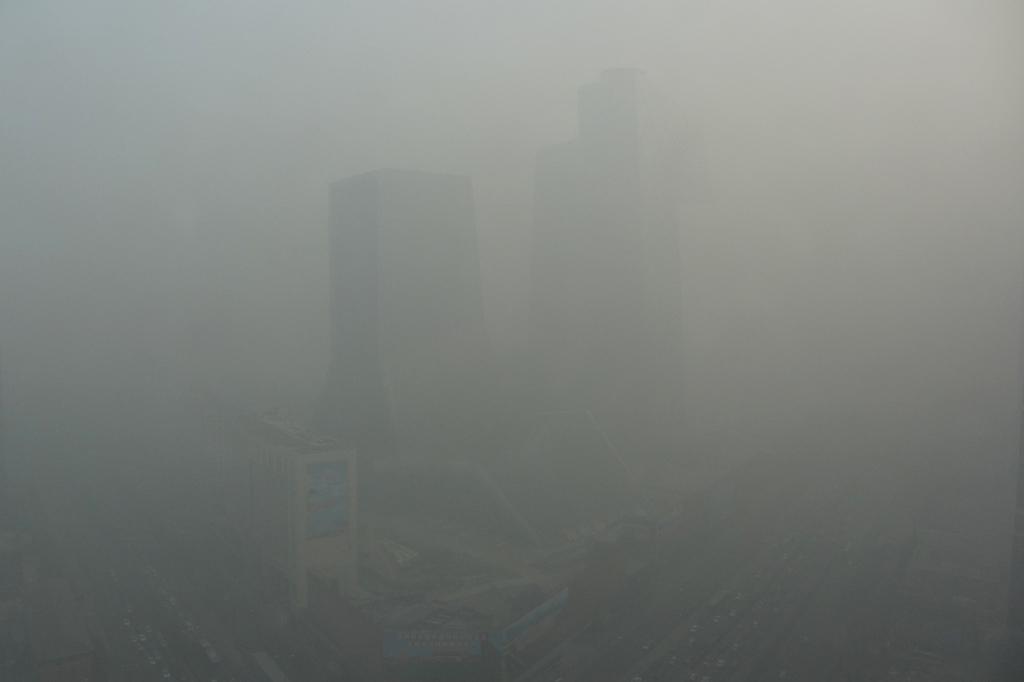Beijing’s pollution defies measurement, but not history
The CCTV tower in China was barely visible through the think smog on Saturday in Beijing. Scroll down to see how the smog changed. (Photo by Chas Pope via Flickr.)
Beijing was wrapped in a suffocating blanket of smog over the weekend.
Pollution, according to air monitors at the U.S. Embassy, was so bad the index used to measure such things doesn’t even go as high as the monitoring equipment recorded. But people who were outside didn’t need fancy equipment to know that the air was bad, they merely had to look up — or out. They were lucky to see the top of buildings, or even a couple blocks down the streets.

A view of the CCTV and TVCC towers on the afternoon of Jan. 12, the afternoon of Jan. 13 and one week before the Opening Ceremony of the Olympics in 2008. Beijing saw previously unheard of levels of pollution over the weekend with air pollution being so bad it was “off scale,” according to the air pollution monitor at the U.S. Embassy. (Photos courtesy of Chas Pope.)
PRI’s The World’s Mary Kay Magistad has lived in Beijing for 14 years and says that this is the worst air quality she can recall. In past years, the government has denied the problem of air pollution, but more recently began releasing more air quality data and expanding programs to reduce emissions.
Of course, China isn’t the first country to deal with bad pollution.
In an interview this spring with Yale Environment 360, the environmentalist Ma Jun connected his cause in Beijing to past efforts in London and Los Angeles:
Many Western cities have gone through a very polluted stage. London used to suffer very badly from “London fog,” which was really smog. At first, people didn’t know the major source of air pollution was burning coal; then they realized it was a big problem, and London gradually phased out coal-fired power plants within city limits. That greatly reduced the discharge of sulfur dioxide, starting in the 1950s. Los Angeles faced a different type of air pollution — it was less about coal and more about car emissions. The way that L.A. addressed air-quality problems was by increasing mileage standards and fuel quality, and also by improving the emissions-control devices installed on cars.
“The Great Smog of 1952” in London led to Britain’s Clean Air Act. Recently, California also enacted a cap and trade program that will require about 350 companies to pay for their carbon dioxide emissions.
Chinese officials are pointing to a phenomenon known as a temperature inversion as the cause for this record-breaking pollution. That too has an historical precedent in the western world. In Donora, Pa., in 1948, some 20 people died and hundreds were hospitalized when a temperature inversion trapped pollution in the small city. The situation was so bad, night practically turned to day; environmentalists trace the aftermath of Donora to the creation of the U.S Clean Air Act.
And while there are no figures available about whether this weekend’s incident led to any direct deaths, a Greenpeace study found more than 8,000 premature deaths each year can be traced to bad air in Beijing, Shanghai, Guangzhou and Xi’an.
